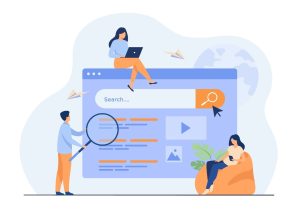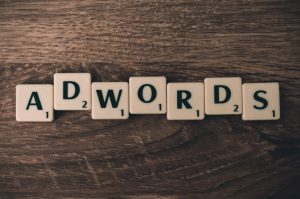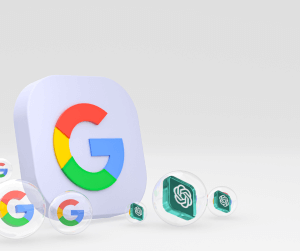8 Min Read

In the dynamic world of online advertising, staying ahead of the competition requires continuous optimization of targeting strategies. One of the most powerful tools at your disposal is Google Ads, a platform that allows you to reach potential customers across the vast network of Google. To maximize the effectiveness of your campaigns, it is crucial to employ smart audience segmentation techniques. In this article, we will explore how leveraging ChatGPT can enhance your targeting capabilities and help you achieve better results.
Understanding Audience Segmentation
Audience segmentation is the process of dividing your target audience into distinct groups based on shared characteristics, interests, or behaviors. By tailoring your advertising messages to specific segments, you can increase relevance and engagement, ultimately driving higher conversion rates. Traditionally, marketers have relied on predefined demographic data or basic user behaviors to segment their audiences. However, with the advancements in AI and natural language processing, we can now take segmentation to a whole new level.
Introducing ChatGPT

ChatGPT, powered by OpenAI, is a state-of-the-art language model that can assist you in optimizing audience targeting for your Google Ads campaigns. It leverages deep learning techniques to understand and generate human-like text responses. By integrating ChatGPT into your advertising workflow, you can tap into its advanced language capabilities to uncover valuable insights about your audience.
Smarter Segmentation with ChatGPT
ChatGPT offers several key features that can enhance your audience segmentation strategies:
1. Natural Language Understanding
With ChatGPT, you can go beyond basic demographic information and understand the nuances of your audience’s interests, motivations, and preferences. By analyzing the language used by your target audience, ChatGPT can help you uncover hidden patterns and insights that traditional segmentation methods may overlook.
2. Contextual Audience Analysis
ChatGPT’s ability to generate contextually relevant responses allows you to dive deeper into your audience’s needs. By engaging in meaningful conversations with ChatGPT, you can extract valuable information that can guide your targeting decisions. For example, you can ask ChatGPT questions about specific products or services to understand which segments are most interested in them.
3. Predictive Analytics
By training ChatGPT on historical data from your Google Ads campaigns, you can leverage its predictive capabilities to forecast the performance of different audience segments. This empowers you to allocate your advertising budget more effectively by targeting segments that are likely to yield higher returns.
4. Real-time Optimization
ChatGPT can provide real-time recommendations to improve your targeting strategy. By analyzing user feedback, engagement metrics, and market trends, ChatGPT can suggest adjustments to your ad copy, targeting parameters, or bidding strategies. This enables you to iterate quickly and stay ahead of your competition.
Implementing ChatGPT in Your Google Ads Workflow
Now that you understand the benefits of leveraging ChatGPT for smarter audience segmentation, let’s explore how you can integrate it into your Google Ads workflow effectively:
1. Data Preparation
To make the most of ChatGPT, ensure you have relevant data from your Google Ads campaigns. This includes historical performance data, customer interactions, and any other relevant information about your target audience. The more comprehensive the data, the better insights ChatGPT can provide.
2. Training ChatGPT
Once you have your data ready, you can train ChatGPT using the provided APIs or pre-built models. By fine-tuning the model with your specific advertising data, you can enhance its understanding of your industry, products, and audience. This step is crucial for maximizing ChatGPT’s accuracy and relevance to your business.
3. Conversational Analysis
Engage in meaningful conversations with ChatGPT to gain insights about your audience segments. Ask questions related to their preferences, pain points, or buying behaviors. The responses generated by ChatGPT will help you understand your audience better and refine your targeting strategies accordingly.
4. Actionable Recommendations
Leverage ChatGPT’s predictive analytics and real-time optimization capabilities to receive actionable recommendations. Use these insights to optimize your ad campaigns, refine your messaging, and allocate your budget effectively. By continuously analyzing and acting upon ChatGPT’s recommendations, you can stay ahead of the competition and drive better results.
In the ever-evolving landscape of online advertising, optimizing targeting strategies is paramount to achieving success. By incorporating ChatGPT into your Google Ads workflow, you can unlock the power of smarter audience segmentation. With its natural language understanding, contextual analysis, predictive analytics, and real-time optimization capabilities, ChatGPT empowers you to make data-driven decisions that lead to higher engagement, conversions, and ROI. Stay ahead of the curve and harness the potential of AI to optimize your Google Ads campaigns.
FAQs (Frequently Asked Questions)
Q1: Is ChatGPT suitable for all types of businesses?
Yes, ChatGPT can be used by businesses across various industries. Its flexibility and ability to understand natural language make it adaptable to different business contexts and audience segments.
Q2: Can ChatGPT replace human marketers?
No, ChatGPT is not meant to replace human marketers but rather to augment their capabilities. It provides valuable insights and recommendations that can inform marketing decisions, but the human touch is still essential for strategy development and creative thinking.
Q3: How long does it take to train ChatGPT?
The training time for ChatGPT depends on various factors, including the size and complexity of the dataset, the computing resources available, and the desired level of accuracy. It can range from a few hours to several days.
Q4: Does ChatGPT require coding knowledge to use?
While some coding knowledge can be helpful for integrating ChatGPT into your workflow, there are user-friendly APIs and pre-built models available that simplify the process. You don’t need to be an expert programmer to leverage the power of ChatGPT.
Q5: Can ChatGPT analyze competitor data?
ChatGPT’s primary focus is on analyzing your own data and providing insights based on your unique advertising context. However, it can also offer general industry trends and benchmarks that can help you understand how you stack up against your competitors.
Q6: How can Digfinity help with Google Ads?
At Digfinity, we have a team of experienced professionals who are skilled in managing Google Ads campaigns. We can help you create targeted ad campaigns, optimize your targeting and bidding strategies, write compelling ad copy, and track performance to ensure you get the most out of your advertising budget. Our goal is to drive quality leads and maximize your return on investment (ROI).
Q7: What makes Digfinity different from other digital marketing agencies?
At Digfinity, we take a personalized and data-driven approach to digital marketing. We work closely with our clients to understand their business objectives and develop customized strategies to achieve them. Our team stays up-to-date with the latest industry trends and best practices to ensure our clients stay ahead of the competition. We are committed to delivering measurable results and providing exceptional customer service.
Q8: How can I get started with Digfinity’s Google Ads service?
Getting started with Digfinity’s Google Ads service is easy. Simply reach out to our team through our website or contact information provided, and we will schedule a consultation to discuss your goals and requirements. From there, we will develop a tailored strategy and implementation plan to help you achieve your advertising objectives. Take advantage of our expertise and drive your business forward with effective Google Ads campaigns.



